Amazing Facts Of Lonar Crater Lake That Intrigues Scientists
Lonar Crater Lake is one unique spot that intrigues even the NASA Scientists.
I had been planning a visit to Lonar Lake since some time but the plans kept clashing with something else always. A trip finally materialized recently.
Located in Buldhana district of Maharashtra near Aurangabad, the 1.8 km diameter Lonar crater was formed some 50-52000 years ago by the impact of a speeding meteorite that hit earth at unimaginable speed. The impact was so strong that the lava was splashed at the periphery of the meteorite forming igneous rocks all around. The impact also created a sulphur spring. Over the years with rain water collecting in the crater it became a crater lake with sulphur spring within it. The lake is 1.2 kilometer in diameter and some 450 feet below the crater rim.

Lonar Crater Lake
When I reached the MTDC Resort, the only stay option at Lonar, I luckily found a guide who out of sheer passion doles out information which he has learnt and collected over the years. A farmer, Rajendra Rathod is keen learner and takes pride in guiding the interested people.
It was good decision to hire the services of guide as he took me down a rocky pathway through the jungle to the banks of lake and few ruins of centuries old temples on the edge of lake. The pathway is not well laid and is more like a trek along the slightly steep hill side. I was breathless climbing up and down 450 feet along the crater surface to and from the lake side. (Read more on Treks near Pune here)
(Read also about Bhimashankar Trek)
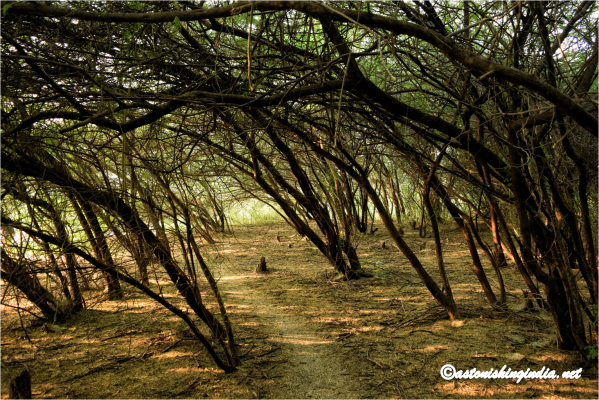
Forest at crater slope
While leopards and monitor lizards have been spotted quite often, I came across a large centipede and two spiky needles of porcupine only. (Read about the Olive Ridley Turtles in Maharashtra here)

A large fat centipede
There are many tree stumps along the lake that seemed to have died because of lake water some years ago.
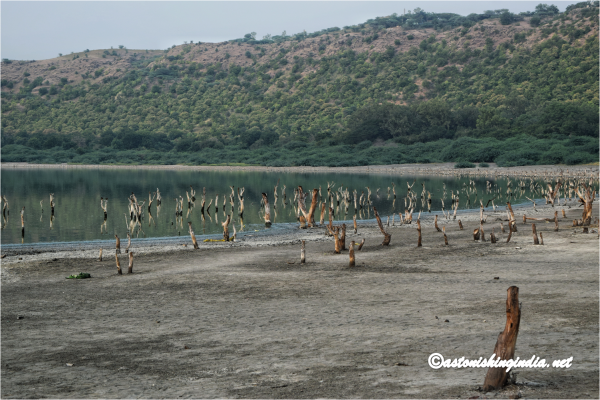
Tree stumps
However the lake is shrinking thanks to yes of course the irresponsible villagers and local visitors who throw garbage while visiting the temple at the lake edge. With no steps taken by Maharashtra Tourism Board to maintain such a unique place on earth, who knows when this National Geo-Heritage Site will be forever lost to us.
Interesting Facts About Lonar Lake:
-
It is the only known hyper velocity impact crater on basaltic rock on earth.
-
The lake waters are both alkaline and saline in nature.
Watch the local guide Rajendra conduct a simple test with help of turmeric and lemon to prove alkalinity of lake water. The lake water turns red as the turmeric reacts with alkaline water. The again make the water neutral the guide squeezes acidic lemon juice and the water turns neutral like the plain water.
-
Lonar Crater Lake smells like rotten eggs.
Would you believe that the lake smells like rotten eggs? The lake water has high content of Hydrogen Sulphide which imparts it the peculiar smell. As I walked along the edge of lake, I had to cover my nose till the time I became accustomed to the smell.
-
The only thing that grows in the lake is blue-green algae.
The algae feeds black winged stilt birds that come to wade in lake water. The algae is also source of some medicines.
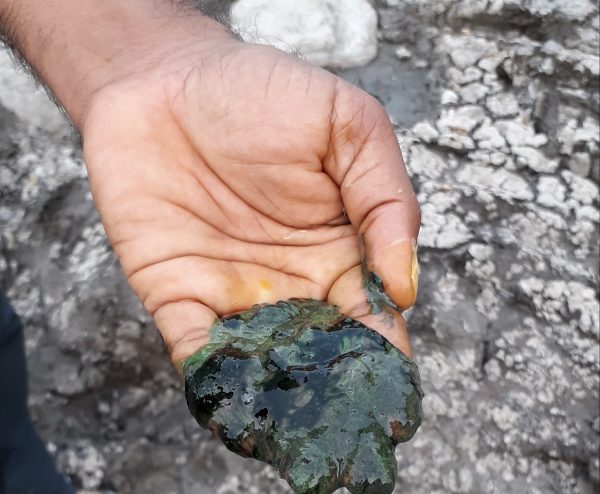
Blue green algae of the lake
-
There are variety of rocks found around the crater.
The guide showed me a pumice stone which is porous and can float on water besides the magnetic rock. There is also abundance of iron particles in the soil around the crater. When the guide ran a clean magnet over the soil, many particles clung on to it. It was quite a surprise to see the stone dust getting attracted to a piece of magnet and proved presence of iron particles.
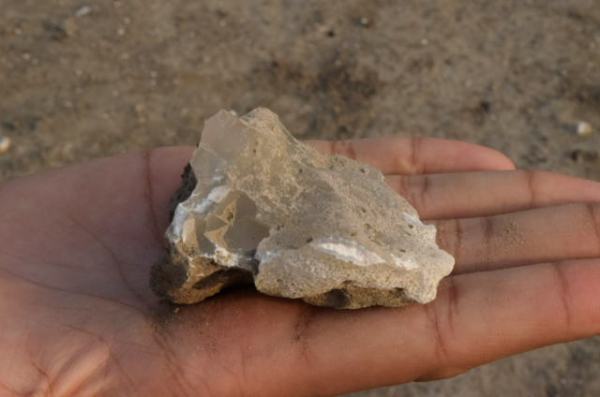
Rocks around the crater

A porous rock

Various minerals on rock surface
-
Nitrogen fixing microorganisms have been discovered in this lake.
-
Deposits of chloride and carbonate salts like Kala namak, Pipadi and Khuppal have been found along the lake
-
Geologists, ecologists, naturalists, astronomers and archaeologists from all over the world flock to the site to study various aspects of the lake.
There are some ancient temples near the lake. Most are in ruins over the years having caved in and are buried in dust. A few in the area, though in bit broken condition, still attract the local villagers. One of the temples is a Hanuman temple. The heavy ancient idol that now lies prostrate has been carved from highly magnetic rock from the crater.

Prostrate idol of magnetic rock at Maruti temple
Another temple dedicated to goddess is popular with villagers who visit for every festival.
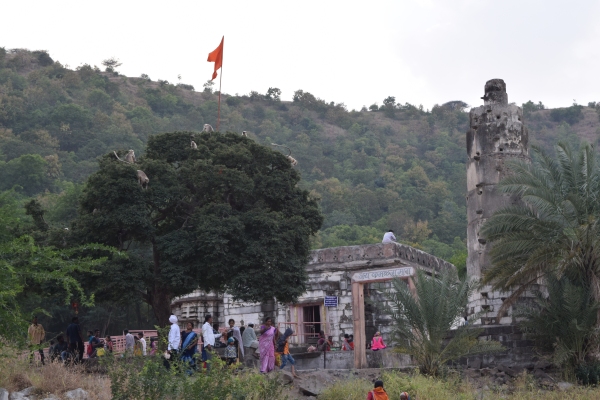
The goddess temple
Other temples around the crater
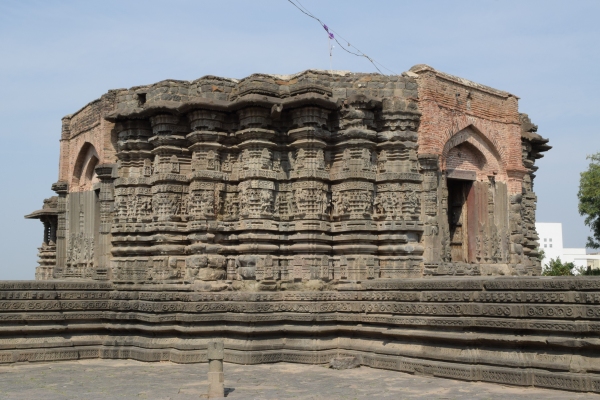
Daitya Sudana temple

Ram temple
Reaching there:
- Nearest railway station is Patur. Mumbai to Lonar by train takes 8 hours.
- Lonar is 3 hrs by road from Aurangabad (Shirdi is also 3 hrs from Aurangabad)which is well connected by road and railway.
- MTDC Resort is the only available stay option at Lonar crater. Aurangabad has many other stay options.
- Ajanta and Ellora Caves also are close to Lonar and Aurangabad.


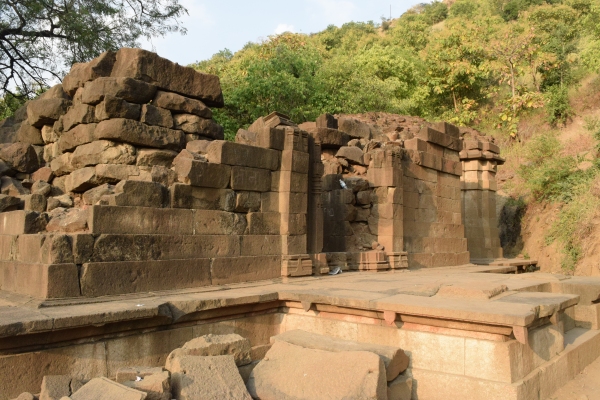
very nicely written.
LikeLiked by 1 person
Thank you Vinayak.
LikeLike
Nice article…and u seriously held the centipede ?
LikeLiked by 1 person
Haha no chance . That is the guide holding it…I run away at sight of a spider 😂
LikeLike
Would like to visit this place someday. Also, loved the architecture of Daitya Sudana and Ram temple.
LikeLiked by 1 person
Please visit…the lake is shrinking gradually
LikeLiked by 1 person
Very interesting posts, came to know many new info. Thanks for the details.
LikeLiked by 1 person
Thank you Jyotirmay. Glad it was of help
LikeLiked by 1 person
Fascinating place. Hope it is not messed up by irresponsible tourism.
LikeLike
Its not the irresponsible tourism as yet because not many people know about this gem. But its the general apathy by Maharashtra Tourism and locals who are destroying this unique place. Soon irresponsible tourism will add to the woe.
LikeLike
Great article! This was my primary source for my science project about Lonar Lake. Thank you.
LikeLike
Thank you Lara. Good to know that it helped. 🙂
LikeLike
You took me there again. Those rock samples have been captured well.
LikeLiked by 1 person
Thank you Indrani. I was amazed by the variety of rocks at one place.
LikeLike
Wow! I had no clue about this geological wonder- thanks for sharing info about it! The H2SO4 smell can be very deadly; hats off to you for braving it! 🙂
LikeLiked by 1 person
Thank you for reading and liking. Lonar lake is indeed one of a kind place on earth. Thanks to wind the smell got dissipated as i moved away from edge of lake 🙂
LikeLike
Interesting things!
LikeLike
Thank You Shrinidhi..glad you liked it.
LikeLike
Good piece of info….with lovely photographs. The art speaks a lot about the culture that prevailed.
LikeLike
Thank you.Indeed
LikeLike
Very nice article.. i am planning to visit the place by end of this month.
I will be highly obliged if you could share with me the name and contact number of guide plz🙏🙏🙏
LikeLike
Sure. Happy to help. Ramesh Rathod Guide Lonar +919158925048
LikeLike